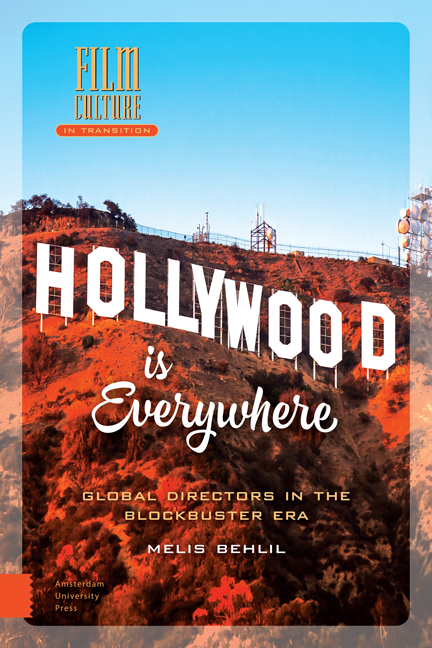Book contents
- Frontmatter
- Dedication
- Contents
- Acknowledgments
- Introduction: Hello Hollywood
- 1 Defining Hollywood
- 2 Cultural Work in a Globalizing World
- 3 Histories and Geographies of Global Directors
- 4 A View to a Franchise: James Bond
- 5 “Once More with the Volume Up”: Auto-remakes
- 6 I Want My MTV: Advertising and Music Videos
- 7 Conclusion: “Everywhere is Hollywood”
- Notes
- Bibliography
- List of Directors
- Index of Film Titles
- Index of Names
- Index of Subjects
- Film Culture in Transition
1 - Defining Hollywood
Published online by Cambridge University Press: 10 December 2020
- Frontmatter
- Dedication
- Contents
- Acknowledgments
- Introduction: Hello Hollywood
- 1 Defining Hollywood
- 2 Cultural Work in a Globalizing World
- 3 Histories and Geographies of Global Directors
- 4 A View to a Franchise: James Bond
- 5 “Once More with the Volume Up”: Auto-remakes
- 6 I Want My MTV: Advertising and Music Videos
- 7 Conclusion: “Everywhere is Hollywood”
- Notes
- Bibliography
- List of Directors
- Index of Film Titles
- Index of Names
- Index of Subjects
- Film Culture in Transition
Summary
Over forty years ago, John Ford said: “Hollywood is a place you can’t geographically define. We don't really know where it is.” Another filmmaker, Miloš Forman, remarked: “It's a mistake to regard Hollywood as one entity. Hollywood doesn't exist – hundreds of Hollywoods exist, and behind every door you’ll find a different Hollywood.” If it was difficult to define Hollywood in the times of Ford or Forman, it became even more challenging in the final decades of twentieth century, when media industries underwent major changes, particularly in terms of ownership and organization. Conglomerates that specialize in multiple fields are in competition with each other, but as David Hesmondhalgh notes, they are also “connected in complex webs of alliance, partnership and joint venture.” Hesmondhalgh highlights the globalization of cultural industries, pointing at the increased circulation of cultural products across national borders, and increasing borrowing and adaptation of images, sounds, and narratives across cultures. In this chapter I show how Hollywood has been approached by scholars, and how the latter have emphasized different aspects of the industry in the last quarter of the 20th century. These include questions of location, globalization, transnationalization, and branding, within the specific context of Hollywood.
“New” Hollywood
The period now called “New” Hollywood, generally accepted to have started in the mid-1970s, has been the subject of a number of studies in recent decades, starting almost simultaneously with the era itself. In 1975, Thomas Elsaesser referred to the New Hollywood of the 1960s as a cinema that was self-conscious of its heritage and inspired by European directors, but this style of filmmaking was only the initial phase of New Hollywood. Geoff King provides two “versions” of the term (2002): “Hollywood Renaissance” and “Blockbuster and Corporate Hollywood.” New Hollywood in this latter sense was initially theorized by Thomas Schatz, who identified the rise of the blockbuster as “the key to Hollywood's survival and the one abiding aspect of its postwar transformation.” Following Schatz, Murray Smith called New Hollywood a “reorientation and restabilization of the film industry” that was achieved after 1975, “a return to genre filmmaking,” but with “greater self-consciousness, as well as supercharged by new special effects, saturation booking, engorged production budgets and, occasionally, even larger advertising budgets.” In the ongoing debates about Hollywood’s industrial structures, two divergent approaches emerge.
- Type
- Chapter
- Information
- Hollywood is EverywhereGlobal Directors in the Blockbuster Era, pp. 27 - 40Publisher: Amsterdam University PressPrint publication year: 2016



